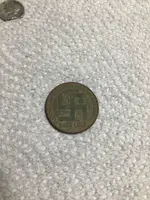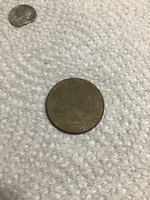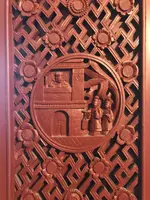Nice find. Lots of companies gave away these ‘tokens’ as good luck pocket pieces, and organisations such as banks or saving/lending institutions used them as advertorial inducements with a small financial value to attract new customers. There are numerous examples here:
https://www.sageventure.com/coins/worry.html
The first savings and loan association in the US was the Oxford Provident Building Association of Philadelphia, which began operating in 1831 with 40 members. By 1890, the concept had spread to all states, with hundreds in operation.
The “Fletcher Avenue Savings and Loan Association” is listed in the 1906 city directory for Indianapolis at 933 Fletcher Avenue, but not in the 1905 or 1904 directories, so I guess they were founded sometime during 1905. By 1913 they had moved to East Market Street, but kept the “Fletcher Avenue” part of their name. They were still in operation during/after the war but, by then, businesses had stopped using the swastika (in either of its orientations) as a good luck symbol because of its association with the Nazi party.
That’s a group of three Egyptian hieroglyphs, although borrowed and presented in a way that isn’t completely faithful to their use in ancient Egypt. They aren’t always used in the fourth quadrant and aren’t always depicted exactly like that but always have some combination of the hieroglyphs representing irrigation, fertile land, bread, bread baskets and the concept of giving. The loose interpretation is intended to be along the lines of future prosperity arising from investment in land.







